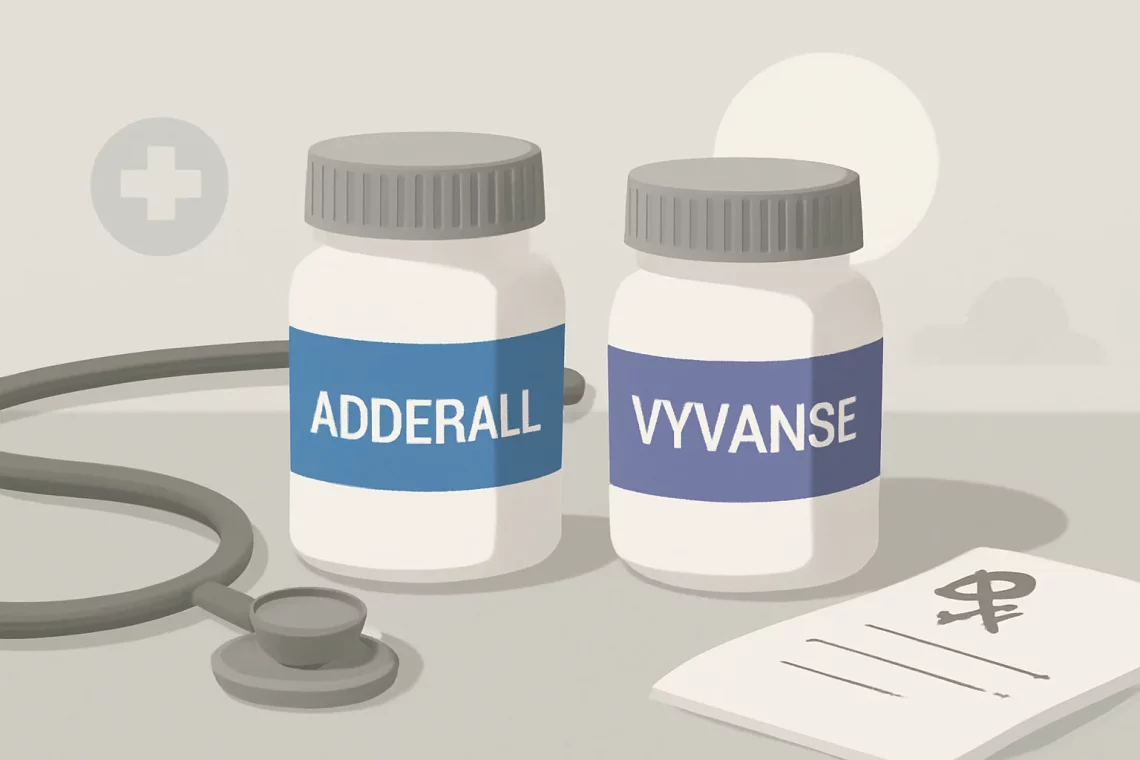
Adderall vs Vyvanse Which ADHD Medication Is Right for You
Adderall and Vyvanse are two of the most commonly prescribed medications for Attention Deficit Hyperactivity Disorder (ADHD). Both drugs are stimulants that affect chemicals in the brain and nerves that contribute to hyperactivity and impulse control. However, despite their similar purposes, they have distinct differences in formulation, duration of action, and side effects, making them suitable for different patients depending on their specific needs. Understanding these differences is crucial for individuals diagnosed with ADHD and their families, as it can impact treatment outcomes significantly.
As the prevalence of ADHD continues to rise, so does the importance of finding the right medication. Patients often find themselves faced with the decision of choosing between these two medications, each presenting its own set of advantages and potential drawbacks. This decision can be overwhelming, especially considering the stigma that sometimes surrounds ADHD and its treatment. Therefore, it is vital to explore the characteristics, benefits, and considerations of both Adderall and Vyvanse to empower patients and caregivers in making informed decisions about ADHD management.
Understanding Adderall: Composition and Mechanism of Action
Adderall is a composite medication that contains a mixture of amphetamine salts. This combination allows it to provide a dual mechanism of action, which is particularly effective for treating ADHD. The medication works by increasing the levels of neurotransmitters such as dopamine and norepinephrine in the brain, which helps improve focus, attention, and impulse control.
One of the defining features of Adderall is its immediate-release and extended-release formulations. The immediate-release version typically lasts around four to six hours, making it suitable for short-term use, such as during school hours or workdays. On the other hand, the extended-release version—Adderall XR—can last up to twelve hours, providing a more prolonged effect. This flexibility allows patients to tailor their medication schedule to their daily routines.
However, Adderall is known for having a higher potential for abuse compared to Vyvanse. Since it is an amphetamine, some individuals may misuse the drug for its stimulant effects, which can lead to addiction. This concern has led to strict regulations and monitoring around its prescription.
Another aspect to consider is the side effects of Adderall. Common side effects can include insomnia, dry mouth, loss of appetite, and increased heart rate. While these effects are manageable for many, they can be problematic for others, leading to discontinuation of the medication. It is essential for patients to discuss any adverse effects with their healthcare provider to find the right dosage or alternative treatment if necessary.
In summary, Adderall’s composition and dual mechanism of action make it a popular choice for many ADHD patients. However, its potential for abuse and side effects should be carefully weighed against its benefits.
Exploring Vyvanse: Unique Features and Benefits
Vyvanse, known generically as lisdexamfetamine, is another stimulant medication used to treat ADHD. Unlike Adderall, Vyvanse is a prodrug, which means it is inactive until metabolized in the body. This unique feature allows for a more gradual release of the medication, leading to a smoother onset of effects and a lower potential for abuse.
The conversion process of Vyvanse into its active form takes place in the bloodstream, which generally results in a longer duration of action, typically lasting up to fourteen hours. This extended duration makes it an attractive option for individuals who require all-day symptom management without the need for multiple doses.
One of the significant advantages of Vyvanse is its lower risk of abuse compared to Adderall. Because it needs to be metabolized before it becomes active, the immediate stimulant effects are less pronounced, making it less appealing for misuse. This factor can provide peace of mind for both patients and their families.
However, Vyvanse is not without its side effects. Users may experience symptoms such as anxiety, insomnia, and decreased appetite, similar to those associated with Adderall. Yet, some patients report that they experience fewer side effects with Vyvanse, attributing this to its extended-release mechanism.
Another crucial consideration is that Vyvanse is typically prescribed for patients who may have had adverse reactions to other medications or those who are concerned about the potential for misuse. Its unique formulation and delivery system make it a suitable option for many individuals managing ADHD.
In conclusion, Vyvanse offers distinct benefits such as a lower potential for abuse and a longer-lasting effect. Patients should work closely with their healthcare providers to assess whether Vyvanse aligns with their treatment goals and lifestyle.
Adderall vs. Vyvanse: Key Differences and Considerations
When comparing Adderall and Vyvanse, it is essential to consider several key differences that can influence treatment outcomes. First and foremost, the mechanism of action is a significant factor. Adderall’s immediate and extended-release options allow for flexibility in dosing, while Vyvanse offers a more consistent release due to its prodrug status, which may result in fewer peaks and troughs in symptom management.
Another critical consideration is the potential for side effects and abuse. While both medications can lead to similar side effects, the risk of misuse tends to be higher with Adderall due to its immediate effects. For patients and families concerned about the possibility of addiction, Vyvanse may present a safer alternative.
Moreover, the duration of action plays a crucial role in daily life. Patients who need medication throughout the day may find Vyvanse’s longer-lasting effects beneficial, as it can cover an entire school or workday without the need for a midday dose. In contrast, those who require shorter, more targeted doses may prefer Adderall’s immediate-release formulation.
Cost is another factor to keep in mind. Depending on insurance coverage, one medication may be more affordable than the other. Patients should consult with their healthcare provider and insurance company to understand their options and potential out-of-pocket expenses.
Ultimately, the choice between Adderall and Vyvanse should be based on individual needs, preferences, and medical history. It is crucial for patients to have a thorough discussion with their healthcare provider to weigh the benefits and drawbacks of each medication. Factors such as lifestyle, response to previous treatments, and personal concerns about side effects and addiction should all be taken into account.
In summary, while both Adderall and Vyvanse serve the same primary purpose of managing ADHD symptoms, their differences in formulation, mechanism of action, and potential side effects make it essential for patients to choose wisely.
**Disclaimer:** This article is not intended as medical advice. Always consult with a healthcare professional regarding any health concerns or medication management.




